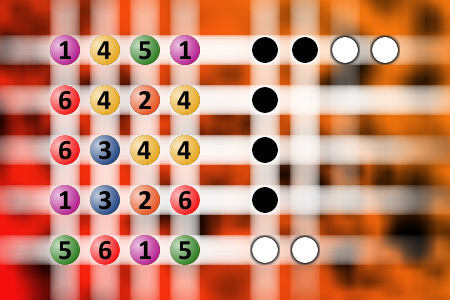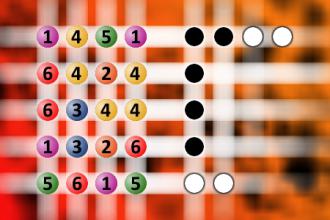Find the right combination
The computer chose a secret code (sequence of 4 digits from 1 to 6). Your goal is to find that code. Black circles indicate the number of hits on the right spot. White circles indicate the number of hits on the wrong spot.Correct answers: 31
The first user who solved this task is Nílton Corrêa De Sousa.
#brainteasers #mastermind

In the Act
A Howard County Policeman broke up a young couple in the act of lovemaking on a pathway in Columbia.
The girl berated the officer long and loud with a barrage of obscenities.
The boy was silent throughout the confrontation.
The officer arrested them both anyway.
The girl was charged with disorderly conduct, the boy with having an offensive person on his weapon.
Submitted by Calamjo

